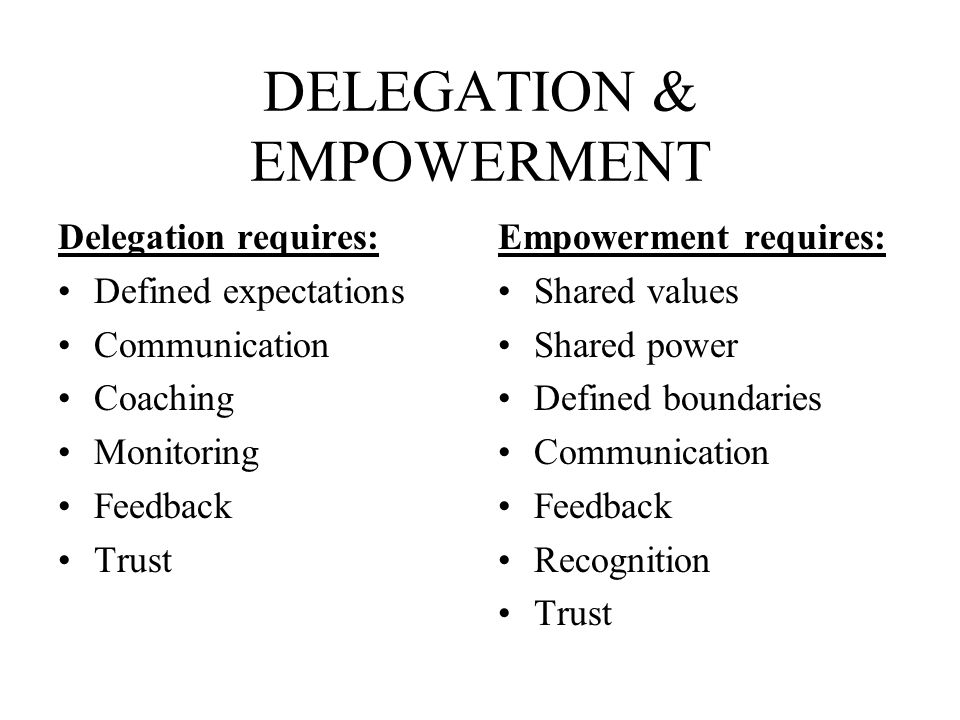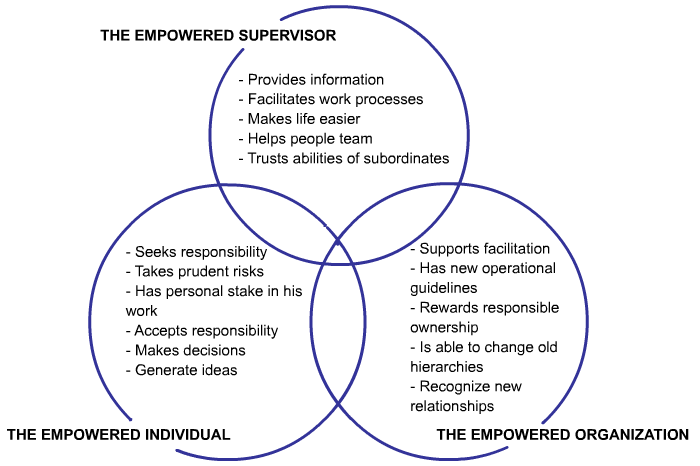In our last newsletter, we talked about delegation and the benefits of assigning responsibility and authority down the hierarchy in order to increase organizational efficiency and effectiveness. Today we will look deeper and take a glimpse at empowerment.
Empowerment is a management practice aiming at driving employees into taking initiatives, making decisions and improving own and organizational performance, by sharing with them information, rewards and power based on shared values and trust!
As the word suggests, empowerment contains power that can be released to develop, strengthen, motivate and satisfy people to the maximum. So how do we release this power and put it to work?
Empowerment begins with a culture of sharing, trusting, appreciation and believing in people’s potential.

This is projected onto the team and creates an incredible momentum. The success of empowerment practices is in the fact that it creates a shift away from a deficit-oriented towards a strength-oriented perception for the people involved. This has deep and lasting results, enabling employees to overcome their sense of powerlessness and lack of influence, to recognize their abilities and put them to use. The employees are taught to cope with their work-related challenges more independently and confidently.
In more practical terms:
 > The manager allows his subordinates more responsibility and authority but also more discretion in decision making and increased liberty in the use of resources.
> The manager allows his subordinates more responsibility and authority but also more discretion in decision making and increased liberty in the use of resources.> This requires the development and enhancement of certain skills on behalf of the employees and the sharing of management information such as the results of corporate KPIs, strategic plans and budgets.
> Management in general calls for greater participation of the employees in the corporate decision making process.
> Flat hierarchies and autonomous, self-managed teams facilitate this model.
> Adoption of employee suggestions, even if they contain some risk and then assigning to them their implementation, is a great way of empowering them.
- Giving team members opportunities to act, create, develop, learn, interact and shine, is the greatest gift a manager can give to her people.
- Self-evaluation procedures can also empower people and so is the continuous support in the learning and development of the employees, through training, coaching, mentoring, providing constructive feedback and matching the role of each employee to his skills, abilities and interests.
> They will take initiative!
> They will become creative!
> They will exceed expectations!
> They will be happy!
> They will make you proud!
> You will need less control and will achieve better results in every business aspect!
Do empowerment efforts always work? No!
> There are circumstances under which empowerment efforts will lead to a dead end or even to failure.
> For example, if a team is extremely dissatisfied or if the management style so far has been very controlling or autocratic, then an abrupt shift to an empowerment model may not sit well with the majority.
> It is possible to cause suspicion or confusion as to how the management wants to deal with people. To say the least, people will simply find it difficult to respond to such a change. So even though empowerment is bliss, it needs to be applied when the culture is ripe enough to accept it.
Furthermore, when consciously applying empowerment tactics, the management needs to assess their effectiveness.
Some tactics may be more appropriate than others, depending on the type of business, corporate culture, characteristics of individuals.
No matter how well intended, empowerment as a management practice, should not be left to chance. It should be structured and assessed. But it is definitely worth trying!
********
RAEW and Job DescriptionIdeally, a role or job/post is not only defined by the requisite Expertise (competences, competencies and experience) and Workload (i.e., time-table and level of whole or partial process workload) but also by the requisite Authority and Responsibility for carrying out optimally the respective (whole or partial) process.
> Only a balanced RAEW can ensure the possibility of optimal process execution.
> A holistic Job Description must, therefore, define the whole RAEW and the respective fixed and variable emoluments including any applicable benefits.
**********
- In practice, effective empowerment requires that the manager is well aware of the ability of his/her subordinates and makes his/her choice depending on the knowledge, experience, ability and workload of his/her staff.
- The manager needs to provide guidance and obtain frequent feedback. At the end of the day, he needs to assess the outcome and share the lessons learned.
**********
Do remember: If delegation can bring improvements, empowerment can work miracles!
17.6.2016


